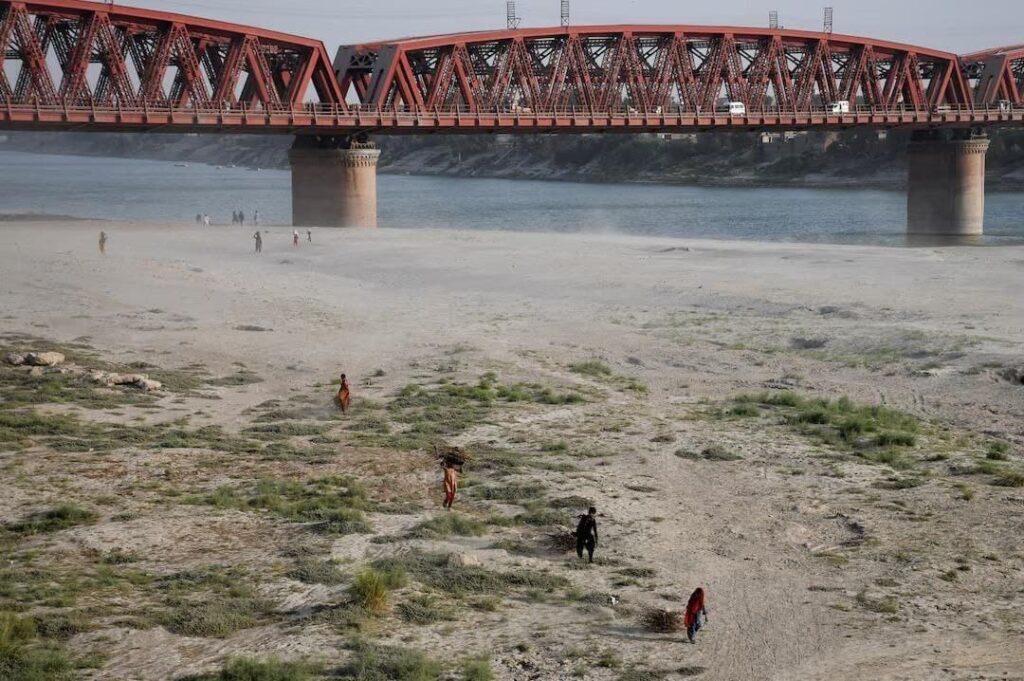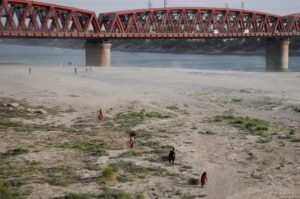Pakistan Faces Water Crisis as Dam Levels Hit ‘Dead’ and Indus Flows Plummet
SambaTimes Special

Islamabad, June 9, 2025 – Pakistan is grappling with a severe water and power emergency as dam water levels in the Indus basin have dropped to critical “dead levels,” with a reported 15% decline in overall river flows. The Chenab River, a vital lifeline for Pakistan’s agriculture and hydropower, has seen its discharge plummet by nearly 89%, exacerbating the crisis.
This dire situation follows India’s suspension of the Indus Waters Treaty (IWT) in April 2025, a move prompted by the Pahalgam terror attack. The 1960 treaty, which allocated the western rivers—Indus, Jhelum, and Chenab—to Pakistan and the eastern rivers—Sutlej, Beas, and Ravi—to India, had been a cornerstone of water-sharing between the two nations. India’s decision to halt the treaty and implement controlled operations at dams like Salal and Baglihar on the Chenab has significantly reduced downstream flows, leaving Pakistan’s key reservoirs, including Tarbela and Mangla, at critically low levels—reportedly below 50% capacity.
The Indus River System Authority (IRSA) has warned that the “sudden decrease in Chenab inflows at Marala” due to India’s actions will severely impact the early kharif sowing season, threatening agricultural output in Punjab and Sindh, which rely on the Indus system for 80% of their irrigation needs. Hydropower generation, critical for Pakistan’s energy supply, is also at risk, with Tarbela and Mangla dams struggling to meet demand.
Pakistan’s leadership has called the treaty suspension an “act of war,” with Prime Minister Shehbaz Sharif raising concerns at a recent glacier preservation conference in Dushanbe, Tajikistan, to draw global attention. The Pakistan Army Chief, General Asim Munir, has warned that any further diversion of Pakistan’s water share could trigger a strong response, including the use of “full spectrum” national power.
In response, China has accelerated construction of the Mohmand Dam on the Swat River, a tributary of the Kabul, to bolster Pakistan’s water security. However, experts note that this project, part of the China-Pakistan Economic Corridor (CPEC), faces security challenges and may not immediately alleviate the crisis. Meanwhile, unconfirmed reports of Afghanistan planning dams on the Kunar River, another Indus tributary, add further pressure on Pakistan’s water resources.
India’s strategic maneuvers, including plans to expand the Ranbir canal and develop new storage projects on Chenab and Jhelum tributaries, signal a long-term intent to maximize its water usage, potentially at Pakistan’s expense. While India has periodically opened dam gates, such as at Salal and Baglihar in early May following heavy rainfall, the overall reduction in flows has sparked alarm across the border.
Analysts warn that the suspension of the IWT could destabilize the region, with Pakistan’s agriculture and energy sectors facing immediate ruin. Diplomatic channels remain strained, and while a ceasefire was agreed upon in May, the water treaty remains in abeyance, leaving Pakistan to navigate an increasingly precarious future.





